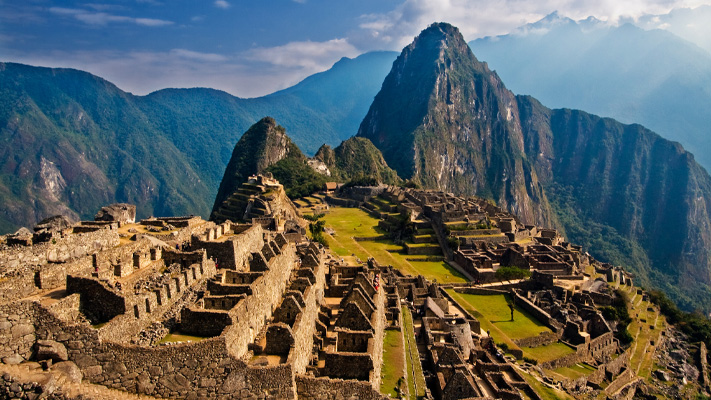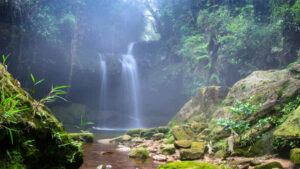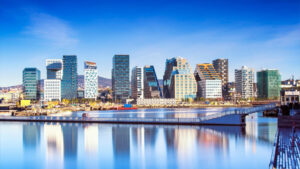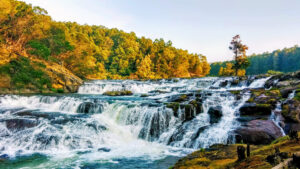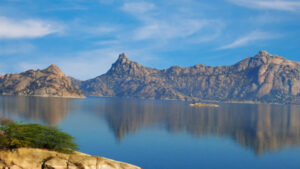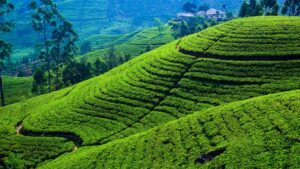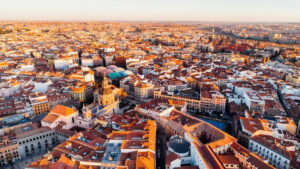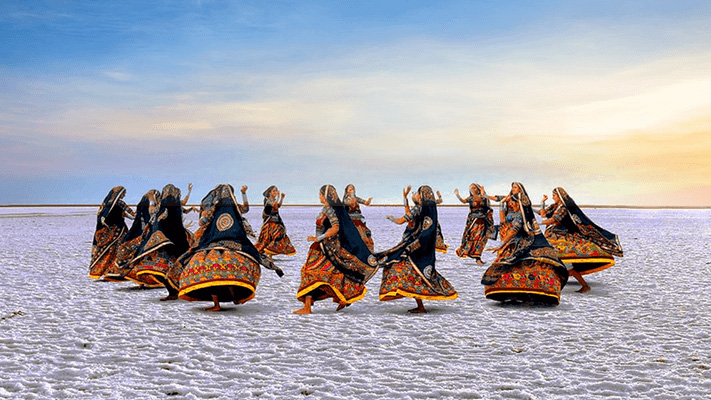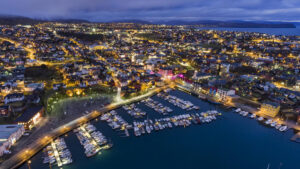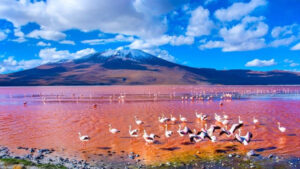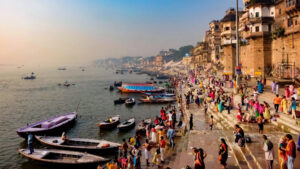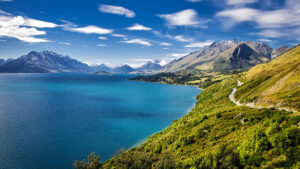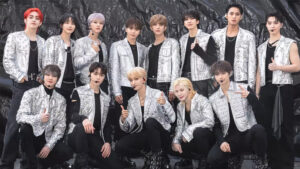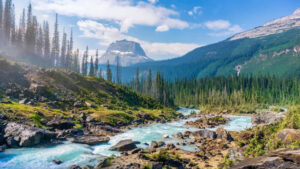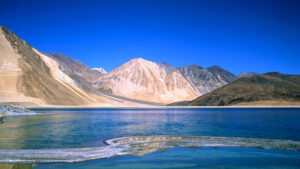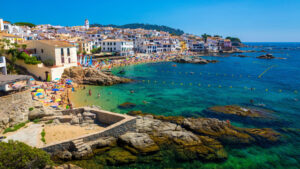MACHU PICCHU, PERU – JOURNEY TO THE HEART OF THE INCA EMPIRE

Perched high in the breathtaking Andes Mountains of Peru, Machu Picchu stands as a testament to the incredible achievements of the ancient Inca civilization. This remarkable archaeological site, nestled amidst lush green peaks and cloud-kissed landscapes, has captivated the imaginations of travelers for centuries. With its enigmatic history, awe-inspiring architecture, and stunning natural surroundings, Machu Picchu has rightfully earned its place as one of the worlds most iconic and sought-after tourist destinations. As visitors wander through its meticulously crafted stone structures and marvel at its mystical charm, they are transported back in time, unraveling the secrets of an ancient empire and immersing themselves in the captivating beauty of Peru’s cultural heritage. Whether you seek adventure, history, or spiritual connection, Machu Picchu beckons you to embark on an unforgettable journey into the heart of this mystical land.

Here are some key details about Machu Picchu:
- Discovery and History: Machu Picchu was built around the mid-15th century but remained relatively unknown to the outside world until its discovery in 1911 by Hiram Bingham, an American explorer. The purpose of the site is still debated, but it is believed to have served as a royal estate for the Inca emperor Pachacuti.
- Architecture: The architecture of Machu Picchu is a marvel of Inca engineering. The site is divided into two main areas: the agricultural sector, consisting of terraces for farming, and the urban sector, with buildings for residential, religious, and administrative purposes. The structures were built using precision-cut stones that fit together without mortar.
- Inti Watana and Temple of the Sun: Inti Watana is a granite rock pillar at Machu Picchu believed to have served as an astronomical observatory and a ceremonial site. The Temple of the Sun, also known as the Torreon, is a semicircular structure with impressive stonework, likely used for religious ceremonies.
- Access: The most common way to reach Machu Picchu is by taking a train from Cusco or the town of Ollantaytambo to the nearby town of Aguas Calientes (also called Machu Picchu Pueblo). From there, visitors can either hike up to the site or take a bus. The classic hiking route is the Inca Trail, but there are also alternative routes such as the Salkantay Trek.
- Preservation and Tourism: Machu Picchu faces challenges related to preservation and sustainable tourism. To protect the site, the Peruvian government has implemented visitor limits and regulations. It is recommended to book tickets in advance, especially during the peak tourist season (May to September).
Visiting Machu Picchu offers a unique opportunity to explore an ancient and awe-inspiring archaeological site while immersing oneself in the rich history and culture of the Inca civilization.
Experiences and Activities Enjoyed by Tourists
Tourists visiting Machu Picchu in Peru have a wide range of experiences and activities to enjoy. Here are some of the highlights:

- Exploring the Ruins: The main attraction of Machu Picchu is, of course, the ancient ruins themselves. Visitors can spend hours wandering through the meticulously preserved stone structures, marveling at the intricate architecture, and imagining life during the height of the Inca civilization.
- Hiking the Inca Trail: The classic Inca Trail is a four-day trek that takes hikers through stunning Andean landscapes, including mountains, cloud forests, and Inca ruins. The journey culminates in reaching Machu Picchu through the Sun Gate, offering a rewarding and unforgettable experience for adventurers.
- Visiting Huayna Picchu or Machu Picchu Mountain: For those seeking a more challenging hike and breathtaking panoramic views, Huayna Picchu and Machu Picchu Mountain offer separate trails. These hikes provide stunning vistas of the surrounding mountains and the opportunity to see Machu Picchu from different perspectives.
- Sacred Valley Excursions: The Sacred Valley, located near Machu Picchu, is dotted with fascinating Inca ruins, charming villages, and picturesque landscapes. Many visitors opt to explore this region, visiting sites such as Pisac, Ollantaytambo, and the Maras Salt Mines.
- Spiritual Connection: Many visitors are drawn to the mystical energy and spiritual significance associated with Machu Picchu. Some choose to participate in traditional Andean ceremonies or seek the guidance of local spiritual healers to deepen their connection to the site.
Top Attractions
In addition to the iconic Machu Picchu ruins, the region surrounding Machu Picchu offers several other top attractions for visitors to explore. Here are some of the notable ones:
- Sacred Valley: Located near Machu Picchu, the Sacred Valley is a picturesque region with breathtaking landscapes, ancient Inca ruins, and traditional Andean villages. Highlights include the ruins of Pisac, Ollantaytambo, and the Maras Salt Mines.
- Cusco: Known as the historic capital of the Inca Empire, Cusco is a vibrant city with a rich cultural heritage. Visitors can explore the charming cobblestone streets, visit the Coricancha Temple, and discover the Inca walls and architecture throughout the city.
- Inca Trail: The Inca Trail is a world-renowned trekking route that takes hikers through stunning Andean landscapes, including cloud forests, mountain passes, and Inca ruins. The journey culminates in reaching Machu Picchu through the Sun Gate.

- Huayna Picchu and Machu Picchu Mountain: These two peaks provide breathtaking panoramic views of Machu Picchu and the surrounding landscapes. Hiking to the summits of Huayna Picchu or Machu Picchu Mountain is a popular activity for adventurous visitors.
- Moray: Located in the Sacred Valley, Moray is an archaeological site with impressive Inca agricultural terraces. The circular terraces, believed to have been used for agricultural experimentation, create a visually striking sight.
- Rainbow Mountain: Also known as Vinicunca, Rainbow Mountain is a colorful mountain range with vivid stripes of mineral deposits. It has gained popularity in recent years for its unique geological features and stunning views.
- Choquequirao: Often referred to as the “sister city” of Machu Picchu, Choquequirao is an archaeological site that rivals its more famous counterpart in terms of its grandeur and historical significance. It is accessible via a challenging multi-day trek.
- Sacsayhuaman: Situated on the outskirts of Cusco, Sacsayhuaman is an ancient Inca fortress with massive stone walls and intricate stonework. The site offers impressive views of Cusco and hosts the annual Inti Raymi festival, a celebration of the Inca sun god.
Must Try Cuisine
Peruvian cuisine is renowned for its diverse flavors, unique ingredients, and fusion of indigenous, Spanish, African, and Asian influences. When visiting Peru, here are some must-try dishes that showcase the country’s culinary delights:
- Ceviche: A beloved Peruvian dish, ceviche consists of fresh raw fish or seafood marinated in lime or lemon juice, mixed with onions, chili peppers, and cilantro. The acidity of the citrus “cooks” the fish, resulting in a refreshing and tangy seafood dish.
- Lomo Saltado: This popular stir-fry dish combines tender strips of beef, onions, tomatoes, and peppers, seasoned with soy sauce and spices. It is often served with French fries and rice, showcasing the Chinese influence on Peruvian cuisine.
- Aji de Gallina: A hearty and creamy chicken dish, Aji de Gallina features shredded chicken cooked in a creamy yellow sauce made from aji amarillo (a Peruvian yellow chili pepper), bread, cheese, and walnuts. It is typically served with rice and boiled potatoes.
- Anticuchos: These flavorful skewers are made with marinated and grilled beef heart, although other meats such as chicken or beef can be used. They are often served with a spicy rocoto pepper sauce and accompanied by potatoes or corn.
- Causa Rellena: This traditional Peruvian dish consists of layers of mashed yellow potatoes seasoned with lime and ají amarillo, filled with various ingredients such as chicken, tuna, or avocado. It is often garnished with hard-boiled eggs and olives.
- Papa a la Huancaina: Boiled yellow potatoes are served with a rich and creamy sauce made from aji amarillo, queso fresco (fresh cheese), evaporated milk, and spices. It is typically garnished with hard-boiled eggs and olives and makes for a delicious appetizer or side dish.
- Rocoto Relleno: Rocoto is a spicy red pepper native to Peru, and rocoto relleno is a dish where the pepper is stuffed with a filling typically consisting of ground beef, onions, raisins, olives, and cheese. It is baked and served with a side of potatoes or rice.
- Chicha Morada: This refreshing drink is made from purple corn, pineapple, cinnamon, and other spices. It has a vibrant color and a sweet, fruity flavor, making it a popular choice to accompany meals or enjoy on its own.

Best Time to Visit
The best time to visit Machu Picchu and Peru, in general, depends on several factors such as weather, events, and festivals. Here’s a breakdown of the different seasons and highlights to consider:
- Dry Season (May to September): This period is considered the peak tourist season in Peru due to the favorable weather conditions. The days are generally sunny and dry, making it an ideal time for hiking and exploring Machu Picchu.
- Shoulder Seasons (April and October): These months are transitional periods between the wet and dry seasons. They offer a good balance between smaller crowds and reasonably good weather conditions.
- Wet Season (November to March): The wet season in Peru coincides with the summer months in the Southern Hemisphere. Expect more frequent rain showers, especially in the afternoons. While the rain can make hiking trails muddy and some areas inaccessible, it also offers a chance to see Machu Picchu surrounded by mist, creating a mystical atmosphere
- Festivals and Events: Peru boasts a rich cultural heritage, and various festivals and events take place throughout the year. Here are a few notable ones:
- Inti Raymi (June 24): This is the most famous Inca festival and takes place in Cusco, featuring colorful parades, traditional music and dance, and a reenactment of ancient Inca rituals.
- Qoyllur Rit’i (May/June): Held near Cusco, this indigenous Andean festival combines Inca and Catholic traditions and includes colorful processions and ceremonies.
- Virgen de la Candelaria (February): Celebrated in Puno, this vibrant festival showcases traditional dances, music, and costumes, attracting participants from various Andean communities.
It’s worth noting that popular events and festivals attract larger crowds and higher demand for accommodations, so plan accordingly.


